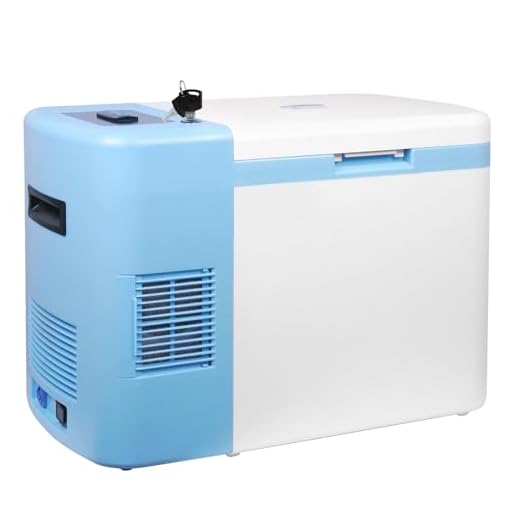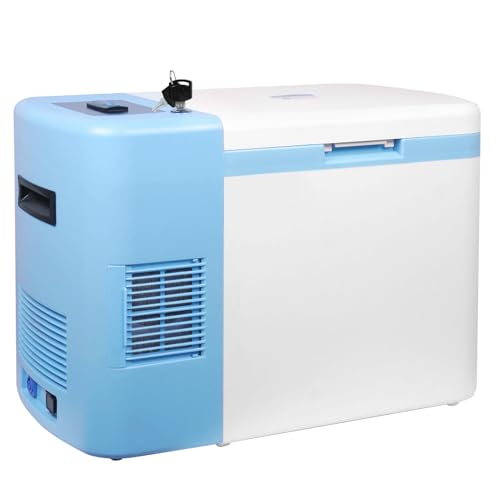

Viruses are microorganisms that depend on a host organism to survive and reproduce. While they can cause a range of illnesses in humans and animals, there is still much to learn about their survival outside of a host.
One of the questions that often arises is how long a virus can survive in a freezer. Freezing temperatures can significantly impact the stability and viability of viruses, but the specific lifespan can vary depending on the virus in question.
Some studies have shown that certain viruses, such as the influenza virus, can remain infectious for several years when stored at -20 degrees Celsius (-4 degrees Fahrenheit). This is due to the fact that freezing temperatures can slow down the activity of viruses, preventing them from degrading as quickly.
However, it’s important to note that not all viruses can survive freezing temperatures for extended periods of time. Some viruses may become inactivated or lose their ability to infect host cells after a certain period in the freezer.
Ultimately, the lifespan of a virus in a freezer depends on various factors, including the specific virus, the temperature of the freezer, and the conditions in which the virus is stored.
Understanding how long viruses can survive in a freezer can be crucial in terms of food safety and vaccine storage. It’s important to follow proper protocols for storing and handling potentially infectious materials to minimize the risk of viral contamination and spread.
Effects of Freezing on Viruses
When viruses are exposed to freezing temperatures, several effects can occur. These effects can vary depending on the type of virus and the specific conditions of the freezing process.
1. Inactivation: Freezing temperatures can cause some viruses to become inactive or lose their ability to infect cells. This is because the freezing process can disrupt the structure of viral proteins and genetic material, rendering the virus unable to function properly.
2. Reduced Stability: Viruses may not be able to withstand prolonged exposure to freezing temperatures, resulting in reduced stability. This can lead to a decrease in the virus’s ability to survive and remain infectious.
3. Extended Preservation: On the other hand, freezing can also be used as a method to preserve viruses for extended periods. By storing viruses at ultra-low temperatures, it is possible to slow down their biological activity and maintain their viability over time.
4. Limited Effect on Some Viruses: It is important to note that not all viruses are equally affected by freezing temperatures. Some viruses, such as certain strains of influenza, can retain their infectivity even after being frozen. This highlights the importance of considering individual virus characteristics when studying the effects of freezing.
Overall, freezing can have various effects on viruses, ranging from inactivation and reduced stability to extended preservation. Understanding these effects can be crucial for the storage, transportation, and study of viruses in different scientific and medical contexts.
Factors Affecting Virus Survival in Freezer
Viruses can survive in a freezer for varying lengths of time depending on several factors. Understanding these factors is crucial for effectively storing and controlling the spread of viral infections. The following are the key factors that affect virus survival in a freezer:
1. Temperature
The temperature of the freezer plays a vital role in determining how long viruses can survive. Freezing temperatures help to slow down the metabolism and reproduction of viruses, thereby prolonging their lifespan. However, extremely low temperatures can also cause damage to viral particles, affecting their survival.
2. Virus Type
Viruses exhibit a wide range of survivability based on their type. Some viruses, such as the influenza virus, can survive for long periods in a freezer. Other viruses, like the norovirus, are more susceptible to freezing temperatures and may lose their infectivity faster.
3. Moisture Content
The moisture content of the viral sample can influence its ability to survive in a freezer. Viruses with higher moisture content tend to be more resistant to freezing temperatures. This is because water molecules within the virus act as a protective barrier against temperature extremes.
4. Freezer Conditions
The conditions inside the freezer, such as air circulation and storage packaging, can impact virus survival. Proper packaging in airtight containers or appropriate storage conditions can help maintain a consistent temperature and prevent freeze-thaw cycles, enhancing the longevity of viruses in the freezer.
5. Time
The duration of time the virus is stored in the freezer is a crucial factor influencing its survival. Viruses that are frozen for short periods are likely to remain infectious, whereas prolonged freezing can lead to a reduction in viability.
6. Viral Load
The initial concentration of viral particles, also known as viral load, can affect survival in a freezer. Higher viral loads may increase the chances of viral particles surviving freezing and preserving their infectivity.
Overall, understanding these factors and implementing appropriate storage conditions can help prolong the survival of viruses in a freezer and prevent their spread. It is important to note that specific viruses may have different requirements for long-term freezer storage, and consulting relevant scientific literature is recommended for accurate information on individual virus types.
Common Viruses that Can Survive in Freezer
Viruses are small infectious agents that can cause various illnesses. While most viruses do not survive well in extreme temperatures, certain viruses are known to be able to survive in a freezer. Here are some common viruses that can persist in a freezer:
Influenza Virus
The influenza virus, which causes the flu, is known to be able to survive in cold temperatures, including in a freezer. Influenza viruses can remain viable for extended periods at temperatures below freezing, although the exact duration of survival can vary depending on factors such as the strain of the virus and the conditions of the freezer.
Norovirus
Norovirus is a highly contagious virus that can cause gastroenteritis, leading to symptoms such as vomiting, diarrhea, and stomach cramps. Studies have shown that norovirus can survive in cold environments, including in a freezer. It is important to note that freezing does not necessarily kill norovirus, so proper disinfection measures should be taken to prevent its spread.
Hepatitis A Virus
Hepatitis A is a viral infection that affects the liver and can cause symptoms such as jaundice, fatigue, and nausea. The hepatitis A virus is known to be able to survive at low temperatures, including in a freezer. Freezing can help to preserve the virus, making it capable of causing infection if proper precautions are not taken.
It is important to note that while these viruses can survive in a freezer, the freezing process itself does not necessarily kill them. Therefore, proper handling, disinfection, and prevention measures should be followed to minimize the risk of viral infections.
Proper Freezing Techniques for Virus Inactivation
Properly freezing viruses is essential for their inactivation, as it prevents them from replicating and causing infections. Here are some guidelines for freezing viruses in a laboratory setting:
| Temperature | Duration |
|---|---|
| -20°C (-4°F) | 24 to 48 hours |
| -70°C (-94°F) | At least 72 hours |
It is important to note that these temperature and duration guidelines may vary depending on the specific virus being studied. It is always best to consult the relevant scientific literature or a virology expert to determine the optimal freezing conditions for a particular virus.
When freezing viruses, it is crucial to use proper containment measures to prevent any potential cross-contamination. This includes working in a biosafety cabinet, wearing appropriate personal protective equipment, and following established disinfection protocols.
Additionally, it is essential to label all frozen virus samples clearly and accurately. This ensures that the samples can be easily identified and traced back to their source, which is essential for maintaining proper record-keeping and biosafety practices.
Once the freezing process is complete, it is recommended to store the frozen virus samples in a dedicated freezer that is solely used for biological materials. This helps to minimize the risk of accidental thawing and cross-contamination.
By following these proper freezing techniques, researchers can effectively inactivate viruses and ensure the safety of laboratory personnel and the surrounding environment.
Safe Handling of Frozen Viruses
Proper handling and storage of frozen viruses is crucial to prevent contamination and maintain their viability for research or diagnostic purposes. Here are some guidelines to safely handle viruses stored in a freezer:
| 1. Personal Protective Equipment (PPE) | Always wear appropriate PPE, including gloves, lab coat, and safety goggles, when handling frozen viruses to protect yourself from potential exposure. |
| 2. Containment | Keep frozen viruses in clearly labeled and securely sealed containers to prevent accidental spills or leaks. Use leak-proof secondary containers and handle viruses inside a biosafety cabinet whenever possible. |
| 3. Temperature Monitoring | Maintain a constant low temperature in the freezer (-70°C or lower) to ensure the long-term preservation of viruses. Regularly monitor and record the freezer temperature to detect any fluctuations. |
| 4. Organization | Develop a systematic organization method for storing different viruses. Implement a clear labeling system with information on the virus strain, storage date, and any other relevant details to facilitate easy retrieval and avoid mix-ups. |
| 5. Limited Access | Control access to the freezer where viruses are stored. Only authorized personnel should have access to the freezer, and entry should be restricted to prevent accidental damage or contamination. |
| 6. Thawing Procedures | Follow established protocols for thawing frozen viruses. Thawing should be done gradually, either in a water bath or at room temperature, depending on the specific requirements of the virus. Avoid any rapid temperature changes that could damage the virus. |
| 7. Proper Disposal | Dispose of any unused or expired frozen viruses according to the guidelines set by your institution or local regulations. Use appropriate biohazardous waste disposal methods to prevent inadvertent release. |
By following these safe handling practices, researchers and laboratory personnel can minimize the risk of accidental exposure and ensure the integrity and viability of frozen viruses for their intended use.
FAQ
How long can viruses survive in a freezer?
Viruses can survive in a freezer for varying lengths of time, depending on the specific virus. Some viruses can survive for several years in freezing temperatures.
Can all types of viruses survive in a freezer?
No, not all types of viruses can survive in a freezer. Some viruses are more resilient and can withstand freezing temperatures, while others are more sensitive and may not survive.
What are the factors that affect the survival of viruses in a freezer?
The survival of viruses in a freezer can be influenced by factors such as the type of virus, the temperature of the freezer, and the duration of freezing. Some viruses are more resistant to freezing and can survive longer than others.
Are there any viruses that can remain infectious even after being frozen?
Yes, some viruses can remain infectious even after being frozen. For example, certain strains of influenza virus have been found to remain viable after long-term freezing.
Is it safe to consume food that has been in a freezer with viruses?
In general, it is safe to consume food that has been stored in a freezer, even if viruses are present. Freezing temperatures can inhibit the growth of most viruses, reducing the risk of infection. However, it is important to properly handle and cook food to ensure its safety.







